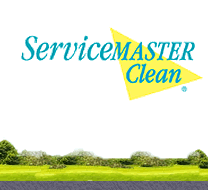Water Damage Dos and Don'ts...
DO . . .
- Remove as much excess water as possible by mopping and blotting
- Wipe excess water from furniture or fixtures after removing lamps and tabletop items
- Remove and prop up wet upholstery cushions for even drying
- Place aluminum foil or wood blocks between furniture legs and wet carpet
- Remove Oriental or area-rugs from wet wall-to-wall carpet or wood floors
- Remove valuable paintings and art objects to a secure and dry place
- Open suitcases and luggage for drying, in sunlight if possible
- Pick up loose items like toys, shoes, and especially newspapers and magazines from wet floors
- Stay out of rooms where wet ceilings are sagging or may have retained water
- Hang furs and leather goods to dry separately at room temperature
- Play it safe. The dangers aren't over when the water goes down. Your home's foundation may have been weakened, the electrical system may have shorted out, and floodwaters may have left behind things that could make you sick.
- Treat all water-impacted surfaces and furnishings as potentially toxic, until properly decontaminated.
- Keep children and pets out of contaminated areas.
- Open your doors and windows to ventilate your home. It takes a brick about a month per inch to dry out, so take care to ensure your house is secure.
- If your electricity has been safely restored, do heat your home as soon as possible. Moisture will move from inside the home if the indoor temperature is warmer than the outside temperature.
- Use portable fans, window air conditioners (set on fan exhaust only), and dehumidifiers to help speed drying.
DO NOT . . .
- Track contaminated material into undamaged areas.
- Leave wet fabrics in place; dry them as soon as possible.
- Leave books, magazines or other colored items on wet carpet or floors.
- Use a household vacuum cleaner on a wet surface, or to remove water.
- Use TV’s, electronics or other household appliances while standing on wet carpet or surfaces, especially on wet concrete.
- Use any electrical appliance or device if it is, or has been wet. Always have a professional check and dry electrical equipment before returning it to service. If you're uncertain whether equipment is live, assume it is.
- Turn on lights or electrical appliance mounted on, or plugged into a wet wall or ceiling.
- Attempt to decontaminated surfaces with sprays and other over-the-counter germicidal products, which may not fully disinfect contaminated surfaces.
- Don't go near a submerged or overflowing septic tank, or try to service it yourself in any way. If you have a pumped system, disconnect the power to the system before checking it, and don't restart the system without having it professionally checked and serviced.


